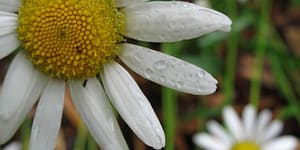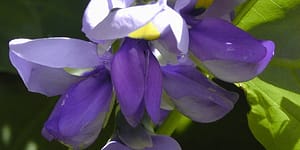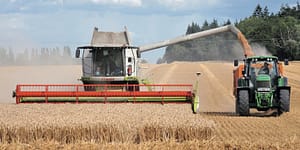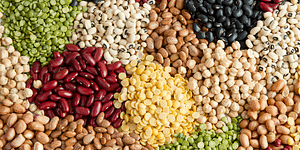Rewilding: Restoration by Letting Go

When it comes to revitalizing the environment, sometimes the best thing we can do is take a step back and let rewilding work its magic. Time and distance often feel like inaction on our part, but removing ourselves from the land is the one action we can take that allows nature the time and space it needs to heal itself.
Award-winning science journalist Judith Schwartz shares inspiring stories from a passionate group of eco-restorers who are following nature’s lead to help revitalize some of the most degraded places on earth—and succeeding.
The following is an excerpt from The Reindeer Chronicles by Judith D. Schwartz. It has been adapted for the web.
Frans Vera, is a Dutch biologist who claims that rather than closed-canopy forest, primeval lowland Europe was mostly savanna. He says that large herbivores like wild horses (tarpan) and cattle (aurochs) helped sustain a woodland-pasture system that was productive and diverse and allowed for sun-loving trees like oak and hazel to thrive. This challenges a long-held notion that in Europe ecological succession inevitably leads to dense forest.

However, the hands-off management of herbivores led to dramatic population fluctuations. With mild winters, animal numbers grew. Harsh weather meant starvation and death. In 2018 there was a public outcry. People protested and brought in bales of hay, while Dutch state foresters culled animals so that they wouldn’t suffer.1 One complication is that Oostvaardersplassen was only partially wild: The site lacked large predators to manage the population of grazers. Currently beset by lawsuits, Oostvaardersplassen’s fate is unclear.
Still, Vera’s insights remain compelling and the reserve, which demonstrates interdependence among herbivores, trees, and wetland birds like geese, provides useful lessons. British author Isabella Tree was inspired by Vera’s work, and undertook a similar project at her Knepp Estate in West Sussex, which she describes in her book, Wilding.
In 1987 Tree’s husband, Charles Burrell, inherited fourteen hundred hectares (thirty-five hundred acres) of arable land, parkland, and historical buildings. The couple moved there to raise their children and set up a conventional grain and dairy farm. By 2000 they realized that it made no economic sense to continue farming conventionally, and they let the operation go. Two years later the property was returning to prairie conditions. She writes,
“The land, released from its cycle of drudgery, seemed to be breathing a sigh of relief. And as the land relaxed, so did we.”2

The revitalization of the land and the emergence of more bird, insect, and plant species continues to amaze Isabella Tree. She opens a 2018 5X15 talk with the soft cooing of turtledoves, noting that Knepp is the only place in England where their numbers are rising.3 She says bringing grazing (and rootling) animals onto the property was like
“injecting dynamism into a flat landscape. Suddenly there’s energy there again, and it’s like putting a glider up into the air. Extraordinary things start to happen. Things start to fly.”
One impediment to more widespread rewilding, she says, is the favored aesthetic in which everything, even nature, should be tidy, a preference that arises from people’s desire for control. We’ve grown up with this “Victorian corseted culture,” she says, adding, “We have to sit back and let nature be in the driver’s seat.” This includes learning to live with nature’s boom and bust cycles. She calls rewilding “restoration by letting go.” It is an exercise in learning to appreciate the hidden potential of our landscapes, she says, as well as an opportunity to “rewild ourselves.”4
Notes
- Patrick Barkham, “Dutch Rewilding Experiment Sparks Backlash as Thousands of Animals Starve,” U.K. Guardian, September 27, 2018, accessed January 23, 2020, https://www.theguardian.com/environment /2018/apr/27dutch-rewilding-experiment-backfires-as-thousands-of -animals-starve.
- Isabella Tree, Wilding: The Return of Nature to a British Farm (London: Picador, 2018), 43.
- Isabella Tree @5X15, May 2018, accessed January 23, 2020, https:// www.youtube.com/watch?v=4cug0KcTnXI.
- Isabella Tree @5X15.
Recommended Reads
Recent Articles
Oxeye daisies are one of the most important plants for pollinators including beetles, ants, and moths that use oxeye daisies as a source of pollen and nectar. Instead of thinking about removing a plant like oxeye daisy, consider how you can improve the fertility and diversity of habitat resources in your home landscape, garden, or…
Read MoreThis long-lived perennial legume is used for forage and erosion control. Kudzu is edible with many medicinal uses and other applications. Pollinators of all kinds love its prodigious lavender blooms!
Read MoreMove aside, maple! We have two new syrups to add to the table. Read on for insights on tapping, selling, and eating syrup from walnut & birch trees.
Read MoreWhy is modern wheat making us sick? That’s the question posed by author Eli Rogosa in Restoring Heritage Grains. Wheat is the most widely grown crop on our planet, yet industrial breeders have transformed this ancient staff of life into a commodity of yield and profit—witness the increase in gluten intolerance and ‘wheat belly’. Modern…
Read MoreDid you ever wonder how leeks, kale, asparagus, beans, squash, and corn have ended up on our plates? Well, so did Adam Alexander, otherwise known as The Seed Detective. The following is an excerpt from the The Seed Detective by Adam Alexander. It has been adapted for the web. My Seed-Detective Mission Crammed into two…
Read More








